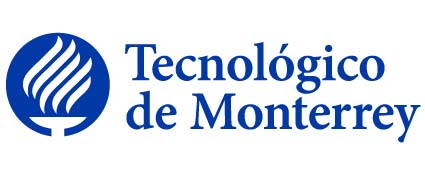
|
|||||
Disciplina asociada:Ingeniería Eléctrica |
|||||
Escuela:
Por definir
|
|||||
Departamento Académico:
Por definir
|
|||||
Programas académicos: |
|||||
Requisitos:No tiene. |
|||||
Equivalencia:E 95102 ; E 99102 ; F4002 |
|||||
Acreditables:F4001 |
|||||
Intención del curso en el contexto general del plan de estudios: |
|||||
Objetivo general de la Unidad de Formación: |
|||||
| Uso de las computadoras para solucionar problemas de ingeniería. Repaso de UNIX y FORTRAN. Propiedades de matrices: determinantes, valores y vectores característicos, teoremas de Gerschgorin, matrices simétricas, matrices positivas definidas y teorema de perturbación. Métodos numéricos directos para resolver ecuaciones lineales: eliminación de Gauss, Gauss-Jordan y factorización LU. Métodos numéricos iterativos para resolver ecuaciones lineales: Jacobi, Gauss-Seidel, relajación y refinamiento iterativo. Métodos numéricos para resolver ecuaciones no lineales: intervalo medio, Newton, secante, Newton Rhapson y descenso más rápido. Regresión lineal. Interpolación: polinominal, Lagrange, diferencias de Newton y secciones cúbicas. Integración numérica: Euler, Simpson y Newton. Ecuaciones diferenciales considerando: condiciones iniciales y condiciones en la frontera. En el transcurso del semestre, el alumno se ambienta con el equipo de cómputo que está disponible en el ITESM, y al uso de productos como el International Mathematics and Statistics Library, IMSL y el Advanced Continuos Simulation Language, ACSL. Cada alumno realiza un proyecto individual donde se aplican los métodos numéricos estudiados. | |||||
Técnica didáctica sugerida: |
|||||
| No especificado | |||||
Bibliografía sugerida: |
|||||
|
LIBROS DE TEXTO: * R.L. Burden y D. Faires, Numerical Analysis, 5th. Edition, Publishing Company, 1993, |
|||||
Perfil del Profesor: |
|||||
|
(141001)Doctorado en Ingeniería Eléctrica/Electrónica y Comunicaciones CIP: 141001 Experiencia recomendada: En solución de problemas en ingeniería utilizando análisis numérico. |
|||||
|
|||||
Discipline:Electrical Engineering |
|||||
School:
Undefined
|
|||||
Academic Department:
Undefined
|
|||||
Programs: |
|||||
Prerequisites:None. |
|||||
Equivalences:E 95102 ; E 99102 ; F4002 |
|||||
Creditables:F4001 |
|||||
Course intention within the general study plan context: |
|||||
Course objective: |
|||||
| Use of the computers to solve engineering problems. Review basic concepts of UNIX and FORTRAN. Matrix properties: determinants, characteristic values and characteristic vectors, Gerschgorin theorem, symmetric matrices, positive definite matrices and perturbation theory. Direct numerical methods for the solution of linear equations: Gauss elimination, Gauss Jordan, LU factorization. Iterative numerical methods for the solution of linear equations: Jacobi, Gauss Seidel, relaxation, and iterative refinement. Numerical methods for the solution of non-linear equations: bisection, Newton, secant, Newton Raphson, and steepest descent. Linear regression. Interpolation: polynomial, Lagrange, Newton differences and cubic splines. Numerical integration: Euler, Simpson and Newton. Differential equations: initial conditions and boundary conditions. During the academic term, the student becomes familiar with the available computing equipment, and the use of products like the Mathematica and Matlab. Every student works in a project where the numerical methods are applied. | |||||
Teaching and learning tecniques: |
|||||
| Not Specified | |||||
Suggested Bibliography: |
|||||
|
TEXT BOOKS: * R.L. Burden y D. Faires, Numerical Analysis, 5th. Edition, Publishing Company, 1993, |
|||||
Academic credentials required to teach the course: |
|||||
|
(141001)Doctoral Degree in Electrical Engineering/ Electronics and Communications CIP: 141001 |
|||||